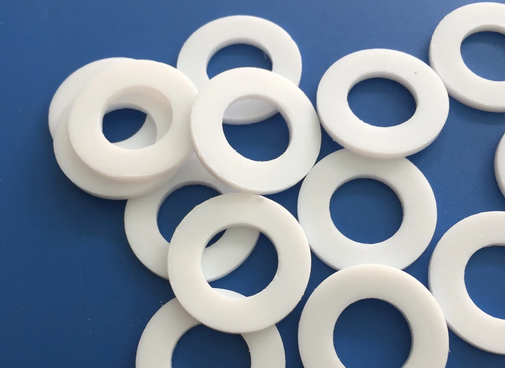Gasket seal for chemical pump
The gasket seal of the chemical pump is an important part of the chemical pump sealing system. Its main purpose is to achieve the sealing effect by plastically deforming the gasket material under the action of the compression load to fill the tiny unevenness of the flange sealing surface. The following is a detailed explanation of the gasket seal of the chemical pump:
1. The principle of gasket sealing
The sealing principle of the gasket seal is mainly based on the blocking theory and the self-sealing theory. The blocking theory believes that the sealing effect of the sealing material is caused by the blocking effect on the internal medium formed by the contact pressure of the sealing material on the joint surface and the elastic recovery force of the tightening external force. Specifically for the gasket seal, when the bolt force causes the flange to press the gasket, the gasket will produce plastic deformation to fill the unevenness on the sealing surface and eliminate the gap, thereby achieving the purpose of blocking the leakage of the internal medium. At the same time, the self-sealing theory also points out that when the internal medium pressure acts, the internal pressure is superimposed on the contact pressure through the sealing material, so that the sealing material fits better with the joint surface, further increasing the sealing effect.
2. Types and selection of gaskets
There are many types of gaskets. Common gasket materials include non-metallic gaskets (such as rubber, polytetrafluoroethylene, etc.) and metal gaskets (such as stainless steel, copper, etc.). When selecting gaskets, factors such as the properties of the chemical pump conveying medium (such as temperature, pressure, corrosiveness, etc.), the sealing surface form of the flange, and the use environment of the gasket need to be considered. For example, when the chemical pump conveying medium is medium pressure and high temperature, a non-metallic and metal combination gasket can be selected; when the medium is corrosive, a gasket material with good corrosion resistance such as polytetrafluoroethylene should be selected.
3. Precautions for gasket sealing
Correct installation: The gasket must be installed correctly, including the size, shape, thickness, etc. of the gasket, which need to match the flange sealing surface. During the installation process, ensure that the gasket is not damaged and keep its surface clean and flat.
Reasonable selection: Select the appropriate gasket type and material according to the actual working conditions and medium characteristics of the chemical pump. Avoid gasket seal failure or leakage due to improper selection.
Regular inspection: Regularly inspect and maintain the gasket seal to detect and deal with potential problems in a timely manner. For example, check whether the gasket is aged, deformed or damaged, etc., and replace or repair it as needed.
Pay attention to the characteristics of the medium: Different media have different corrosive and abrasive properties on the gasket. Therefore, when selecting the gasket material, it is necessary to consider the characteristics of the medium and select a material with corresponding corrosion resistance and wear resistance.





